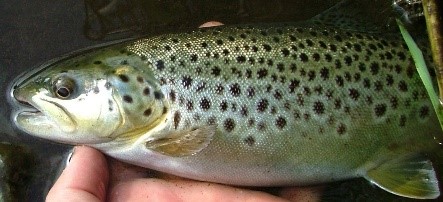Research

Research in the Fish Evolutionary Ecology Lab
Our research currently encompasses the following themes.

(i) Breeding system evolution – Fishes with their diverse breeding systems are excellent models for the study of breeding system evolution, particularly in the face of environmental change. We explore the forms of selection shaping both males and females and their interactions (mate choice and intrasexual competition) pre-zygotic and post-zygotic. Furthermore, we are interest in understanding the spatial and temporal variability in the intensities of such selection, and the evolution of alternative reproductive phenotypes.

(ii) Maternal and other effects on offspring performance – This research extends that on breeding systems to explore the evolutionary significance of maternal effects (e.g., egg size, breeding time and nesting location) and other transgenerational forces shaping offspring performance and population dynamics. For example, it is clear that Mom’s access to resources, whether they be marine derived or freshwater derived, will be passedalong to her offspring through the egg and shape their performance. This may ultimately affect the evolutionary dynamics and co-existence of anadromous (i.e., marine migratory) and resident phenotypes within populations. Moreover, Mom will play a major role in determining where offspring will be initially placed (habitat and environment) and when, affecting factors such as access to food, predation risk and competition.

(iii) Life history diversity – Our work in this area includes studies of reproductive investment by fishes, the role of life history diversity in population stability, the effects of phenotypic heterogeneity on intraspecific competition, and the evolution and maintenance of the alternative life history strategies such as residency/anadromy. A major challenge for ecologists has been to understand the processes that shape variability in population abundances, and our work has shown that population stability in response to exogenous forces can be more a function of population size and complexity than a product of resource allocation to offspring production. that within-population variation in egg size is unlikely to have evolved to reduce interspecific competition. Finally, we are currently exploring the selective maintenance of and interactions between alternative migratory tactics (residency versus anadromy) in Atlantic salmon.


(iv) Invasion Biology and Consequences of the Escape of Cultured Fish – Within the context of conservation ecology, we study the relative roles of environment and genetics (i.e. non-indigenous origins and domestication) and associated phenotypic plasticity in the potential for invasive fishes, including escapees from aquaculture, to establish both within native and non-native ranges, and to assess impacts on the productivity and genetic integrity of wild fish populations and the ecosystem they inhabit. Applying the theoretical underpinnings of evolutionary and conservation ecology, combined with lab and large-scale field experiments, we were among the first to recognize and quantify the impact of the escape of farmed fish on wild populations. Our collaborative research remains at the forefront of quantifying the extent and consequences of such hybridization and introgression in the disruption of local adaptation. Using experimental studies to quantify the genetic and phenotypic consequences of hybridization we have identified distinct maternal effects on survival and growth in nature, as well in energy acquisition and storage. We are also exploring the consequences of the introduction of brown trout to Newfoundland, as it provides a means to investigate evolutionary processes, including convergent evolution and phenotypic plasticity along differing, independent colonization routes, as well as the impact on congeneric species and biological communities.

(v) Evolutionary and Behavioural Responses to Climate Change – Currently, there is limited knowledge on how Atlantic salmon populations will respond to climate change. The ability adapt to warmer temperatures will depend on both environmental and genetic factors and likely vary across populations, suggesting some populations may be more vulnerable to the effects of climate change. In collaboration with partners we aim understand and predict the effects of climate change by coupling lab- and field-based experiments with genomic investigations to help identify genes and mechanisms involved in temperature adaptation. Mounting evidence also indicates that southernmost anadromous Arctic char populations along the Labrador coast are potentially vulnerable to the environmental impact of a changing climate and are at risk of marked depletion in the coming decades. Marine habitat use is instrumental in the anadromous life history of these fishes as it is critical for energy and nutrition acquistion, in collaboration with Inuit communities in Nunatsiavut we are exploring the factors affecting char habitat use (whether that be habitat availability, food accessibility or favourable thermal refuges) and how it may be affected by phenological mismatches.

(vi) Evolutionary and Behavioural Ecology of Salmonids at Sea – We have been investigating the factors shaping the movement of anadromous fishes in the marine environment. Migratory movements during the nearshore marine phase by kelts (post spawners) are faster, more directed and less nocturnal (lower predation risk) than those of smolts (juvenile first-time migrants), and show a degree of population specificity reflecting inherent trade-offs. We have found that life stage (smolt vs kelt), as well as spawning history (consecutive vs alternate repeat breeder), influence migratory movements and dietary patterns throughout the at-sea phase of Atlantic salmon. Furthermore, survival to repeat breed is consistent with spawning-history-dependent differences in lipid density, as first-time spawners have lower return rates compared to repeat spawners.